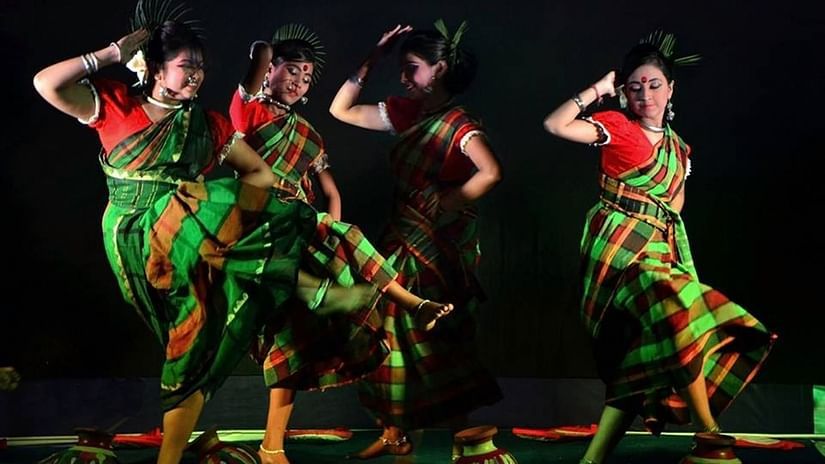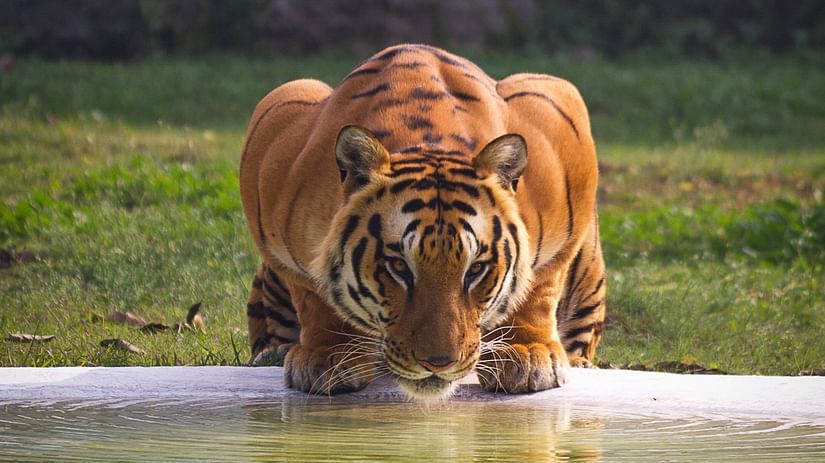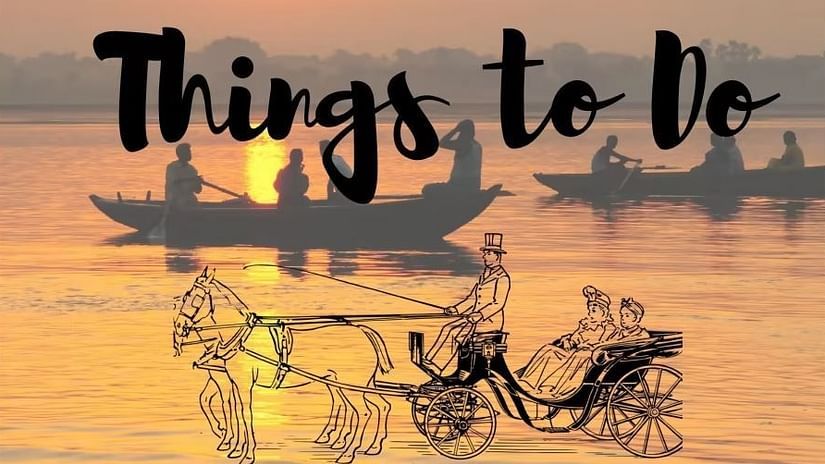- Celebrate Durga Puja on Water: Experience the Festival Like Never Before at Polo Floatel Kolkata
- Polo Orchid Cherrapunji - Cliffside Luxury with Views of Seven Sisters Falls
- Polo Floatel Kolkata - The Finest Floating Hotel on the Ganges with Iconic Howrah Bridge Views
- Five-Star Living at Hotel Polo Towers - Agartala’s Premier Hotel Destination
- Tring Tring: Ringing in Fun and Flavour in Shillong!
- Arwah Cave, Cherrapunjee, Meghalaya
- Delhi to Agartala
- Poush Sankranti Festival
- Bishop Falls Shillong
- Cathedral of Mary Help of Christians Laitumkhrah Shillong Meghalaya
- Trip to Kolkata
- Sepahijala Wildlife Sanctuary & Zoo
- Bangladesh to Agartala
- Lady Hydari Park Shillong Meghalaya
- Rainbow Falls Cherrapunjee
- Babu Ghat
- Durga Puja in Agartala
- Don Bosco Museum Shillong
- Best Time for Shillong Tour
- Meghalaya Itinerary For 4 Days
- Demseiniong Falls
- Unexplored Places in Tripura
- Best Time to Visit Tripura
- Sweet Falls Shillong
- Nehu Waterfall
- Offbeat Places in Kolkata
- Adventure Sports in Shillong
- Spread Eagle Falls
- Lyngksiar Waterfall
- Blue Lagoon Meghalaya
- Weekend Getaway in Kolkata
- Handicrafts of Tripura
- Agartala Museum
- Sightseeing in Agartala
- Kharchi Puja Agartala
- Sightseeing In Shillong
- Tourist Places in Shillong
- Sightseeing In Cherrapunjee
- Places to visit in Cherrapunjee
- Cherrapunji Rainfall
- Discover Cherrapunji's History at Polo Orchid Resort
- Cherrapunjee Rainfall
- History of Cherrapunjee
- Ujjayanta Palace Agartala
- Best time to visit the Seven Sisters of India
- Festivals of Kolkata
- Unexplored Places in Shillong
- Shillong Tourist Places
- Tourist Places in North East India
- Folk Dances of North East India
- Trekking in Cherrapunjee
- Tourist Places in Cherrapunjee
- Shillong in Summer
- Temples in Shillong
- FESTIVALS IN TRIPURA
- JAGGANATH BARI AGARTALA
- Offbeat Places in Meghalaya
- Unique Sweets - Shillong
- Shillong View Point
- Parks in Agartala
- 7 Beautiful Villages in India
- Bamboo Trekking in Meghalaya
- Kynrem Falls
- Best Places to Eat in Shillong
- Best Cafe in Shillong
- Unexplored Places in Meghalaya
- Historical places in Kolkata
- Famous Sweet Shops in Kolkata
- Shillong in April - Spring in Shillong
- Best Places in Shillong for Couples
- Cherrapunjee Eco Park
- Khasi Monoliths Meghalaya
- Famous Food of Tripura
- Dainthlen Falls Cherrapunjee
- New Year Celebrations in Kolkata
- Seven Sisters of India
- Best Food in Shillong
- Durga Puja in Kolkata, 2023
- Mesmerising Shillong Autumn Festival
- Enchanting Shillong in Winter
- Experience Kolkata in Winter Months
- Exploring Kolkata's Rich Heritage
- Indulge in the Dover Lane Music Festival
- Pre-wedding Shoot Locations in Kolkata
- A Road Trip From Guwahati
- The Iconic History of Howrah Bridge
- Wedding Extravaganza at Floatel Kolkata
- Lady Hydari Park in Shillong
- The Wild Fruits of Meghalaya
- Thangkharang Park and Ka Khoh Ramhah, Cherrapunjee
- Mawkdok Dympep Valley - A Gem in Meghalaya’s Tourism Circle
- The Cleanest Village in Asia - Mawlynnong
- Mawsynram Village - The Wettest Place on Earth
- Don Bosco Museum - A Glimpse Into Indigenous Lifestyle
- A Visit to Cathedral of Mary Help of Christians
- A Visit To Udaipur, Tripura
- Tripura: History, Culture & Heritage
- The Unique Modes of Transport in Kolkata
- Laitlum Canyons
- Nohkalikai: India's Highest Plunge Waterfall
- Agartala gets it’s first 5-Star Hotel
- Sohra - The Land of Oranges
- Mawryngkhang Trekking Destination at Wahken
- Best Destination Wedding Resorts in India
- Safest Places in India for Solo Female Travellers
- Open-air dining at Sky Grill
- A weekend getaway: 2 day itinerary for Cherrapunjee
- Reasons to Celebrate Weddings at Cherrapunjee
- Raise a toast at The Grand Bar
- A Cliffside Dining Experience At Sohra House, Cherrapunjee
- The Sweetness of Pineapples in Agartala
- Seize the time at Polo Floatel, Calcutta
- Don't lose out on luxurious experiences!
- Ultimate Tour Guide Through Meghalaya
- Rejuvenate at Woodstock Resort
- Your 2-Day Itinerary to a Weekend at Polo Agartala!
- Timeless Romantic Experiences at Floatel!
- Experience Food Heaven At Our Cafés
- Multi-cuisine feasts delivered to your door from Polo
- The Newest Cloud Kitchen In Kolkata:Room Service By Polo Floatel
- Celebrate your wedding amidst nature at Polo Resort
- Exquisite Dishes from Khasi Cuisine
- Places to Visit in Agartala
- Cocktail Pre-Mixers by Polo Floatel
- Celebrate your wedding at Agartala’s first five-star destination
- Polo Resort – Ready to welcome you again!
- A Road Trip Across Northeast India
- Exploring the Greens of Agartala
- Unakoti: Tripura Heritage Site
- Waterfalls in Cherrapunjee Sohra Waterfalls
- Best Time to Visit Cherrapunjee
- Living Root Bridges in Cherrapunjee
- Journey through the Abode of Clouds, Meghalaya
- Cuisines of Shillong
- Cherry Blossom Festival in Shillong
- Woodstock Music Festival
- Winter activities in Cherrapunjee
- Meghalaya Travel Itinerary
- Christmas in Meghalaya
- Historical Places in Kolkata
- Kolkata Cuisine - Best Traditional Dishes
- Things to do in Agartala
- Tips & tricks for first time hikers in Cherrapunjee
- Redefining amenities luxuriously!
- A cocktail of experiences awaits you at Sky Deck - Constellation
- Ride the tide of nostalgia, love, scenic beauty & more
- Explore the Magical Caves in Cherrapunjee
- The Sacred Groves in Meghalaya
- Flora and Fauna of Meghalaya
- Unboxing the Northeast
- Celebrity Visit in Hotel Polo Towers Agartala
- Tranquil Vibes at Polo Resort Spa
- Shopping at Police Bazaar in Shillong
- A Peek Into the Khasi Culture
- Exploring Meghalaya’s Wildlife
- Things To Do in Kolkata
- Planning A Road Trip to Agartala
- Musical Heritage of Kolkata
- Celebrating Poila Boishakh
- Breakfast with a view at Cherrapunjee
- The Amazing Nightlife of Shillong
- Top 5 Activities to do in Cherrapunjee
- Shillong Monsoons: Nature Blooming in all its Glory
- Indigenous Handicrafts of Meghalaya
- Monsoon in Meghalaya
- Wildlife Sanctuaries in Tripura
- Unique Dining Experiences in Kolkata
- Monsoon in Kolkata
- What makes Kolkata an amazing travel destination?
- What makes Cherrapunjee a destination wedding hotspot?
- The Rock Capital of India
- Laitkor Peak in Shillong
- A Trip to the Majestic Elephant Falls
- The Picturesque Laitlum Canyon in Shillong
- The Unique Culture & Heritage of Tripura
- The Vibrant Festivals in Meghalaya
- A Trip to Krem Mawmluh Cave, Cherrapunjee
- Best Time to Visit Shillong
- A Trip to Ward’s Lake, Shillong
- A Taste of Indigenous Life at Shillong
- Exploring the Art Culture of Kolkata
- The Famous Museums in Kolkata
- An occasion of a lifetime at Polo Resort!
- The Regality of Agartala’s First 5-Star Hotel
- Bed, Breakfast and the Perfect Staycation at Woodstock Resort
- A Trip to the Historical Places in Meghalaya
- Mawsmai Nongthymmai Eco Park
- A Refreshing Trip to Dawki
- A Fun Trip to Umiam Lake
- Shillong Golf Course - The Glen Eagle of the East
- The Annual Kolkata International Book Fair
- Shop Like a Pro at Kolkata's Local Markets
- Visit the Popular Durga Puja Pandals in Kolkata, 2021
- Street Food in Kolkata: A Culture Trip
- Experience Shreya Ghoshal’s Mesmerizing Concert in Kolkata
- Stay at Polo Floatel for Alan Walker’s Concert in Kolkata
- Polo Floatel: The Perfect Stay for Bryan Adams Concert Attendees
Tripura, the third smallest state of India, is an unspoiled natural gem nestled in the northeastern region. The state has 19 different tribal communities along with Manipuri and Bengali communities that contribute to the rich cultural heritage of Tripura. A large number of races residing in the state contribute to the state’s dynamic culture. Every community has its own set of traditions and customs, which gets passed on to the younger generations.
The Rich History Behind Tripura
Tripura was known as Kirat Desh during the ancient period. Traces of Tripura’s history can be found in the Rajmala stories that document the accounts of Muslim historians and the king of Tripura. According to them, the rulers of Tripura were known by the surname ‘Fa,’ meaning ‘Father’. The state is also mentioned in Mahabharata and many religious Puranas and inscriptions from the time of the Ashoka Emperor.
The book of Rajmala, written by the Tripuri kings in the 15th century, provides complete documentation of the history of Tripura. During the time of British rule, Tripura was one of the independent states in India. Before that, the state was under the dominion of the Manikya Empire. The Manikya Dynasty rulers governed Tripura for a long period. In the year 1972, Tripura was recognized as one of the Indian states.
Culture and Heritage of Tripura
The culture of Tripura is defined by the communities and their tradition. The tribals like Kuki, Garo, Uchoi, Mizo, Manipuri, Tripuri, and Rang still like to live in the forest. Most of the Bengali Hindus reside here in large numbers and influence the culture of Tripura. There are many mythologies, stories, puzzles, songs, and folklores that are influenced by the state’s culture. All these stories are based on everyday experiences with descriptions of gods, goddesses, demons, witches, animals, flora and the galaxy. In Tripura, the people of every community pay special attention to the environment and keep it clean.

Tripura’s cultural domain is rich with a wide spectrum of various multi-dimensional features. Music, folk dance, and festivals are the defining elements here. The folk dance and songs are performed at weddings, festivals and religious occasions. Some of the most famous dance and art forms are Bizu, Garia, Jhum, Hai Hak, Lebang Boomani, and many more. Each tribe of Tripura possesses its line of music and dance tradition, making each unique.

Make sure to visit this beautiful and naturally rich state once in your lifetime to experience the best of the state of Tripura. On your visit, pamper yourself to a luxurious stay at Hotel Polo Towers, Agartala.

